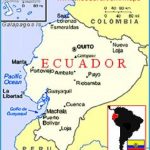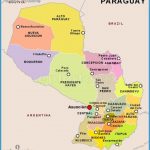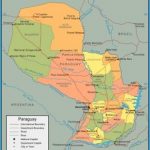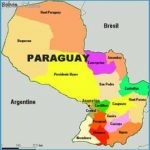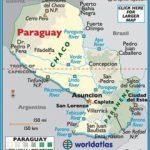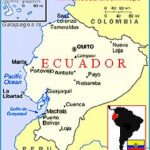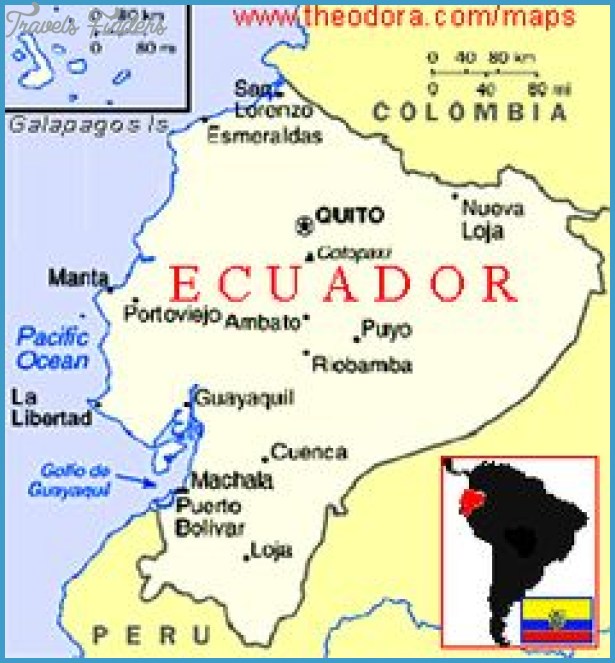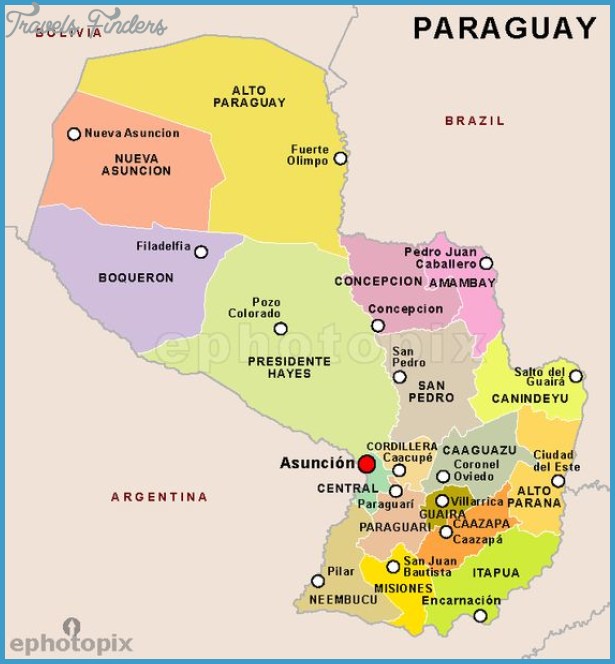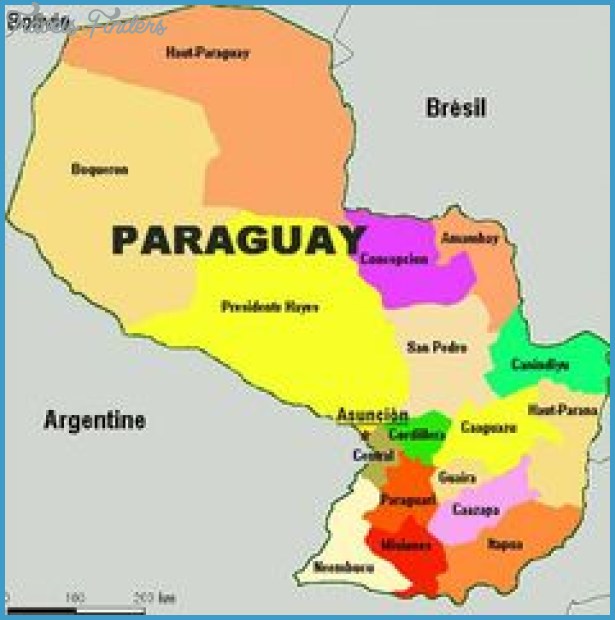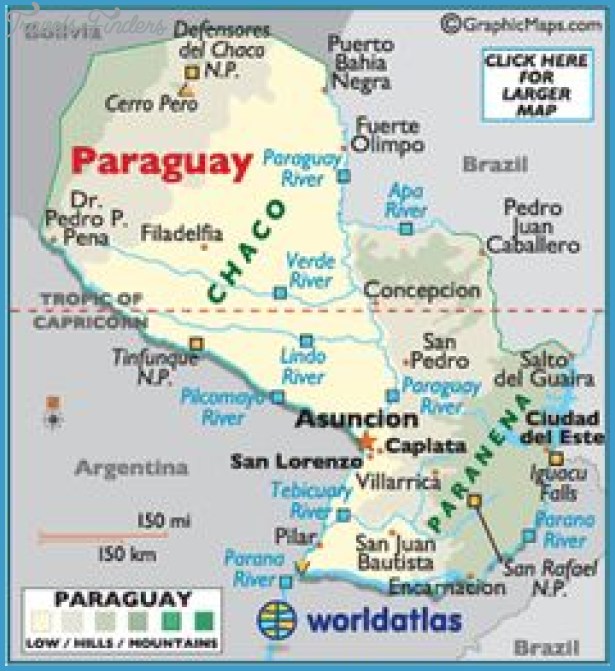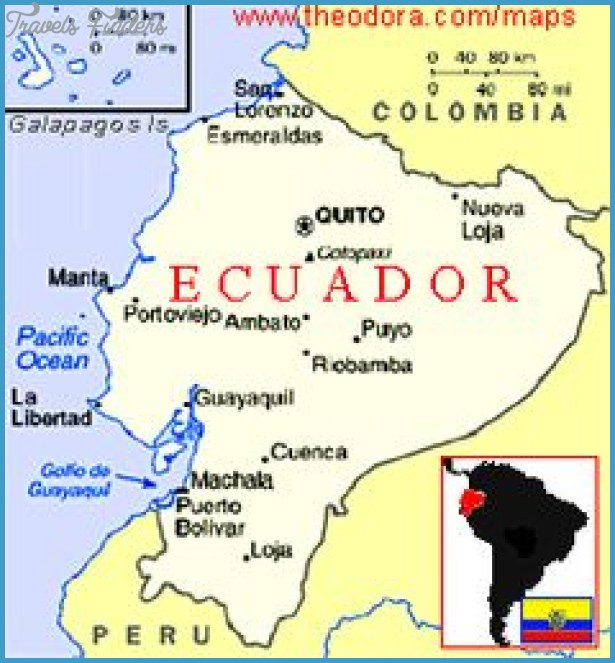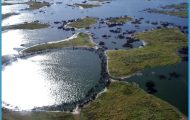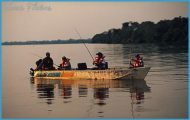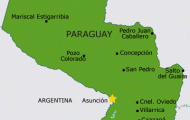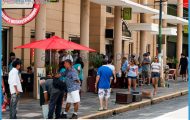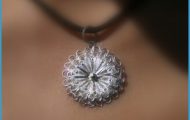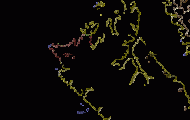Calle Palma
During the 60’s and 70’s, before the action moved towards the residential neighborhoods of Villa Morra and Carmelitas, Calle Palma was the place to be for Asuncion’s elite. The street was lined with fancy storefronts and was turned into a pedestrian walkway on Sundays where people came to see and be seen. Strolling down Calle Palma in your best Sunday outfit otherwise known as going to ”palmear” and is remembered fondly by older generations. One of the remaining vestiges of the fancy Calle Palma is Farmacia Catedral on the corner of Palma and Independencia Nacional, which retains an elegant, old-fashioned feel with its rich wood, paneled walls and counters and decoratively tiled floors.
Museums & Sites
There are several museums in Asuncion, most of which offer free admission. If you are pressed for time (or limited to the city center) the Museo Cabildo is a good bet as it covers aspects of Paraguay’s history and includes permanent mini exhibits from two excellent museums that are further away – the Museo del Barro (near Shopping del Sol) and Museo Guido Boggiani (in San Lorenzo).
Museo del Barro
The Museo del Barro is Paraguay’s best museum. Created in the late 1970’s by a group of the nation’s pre-eminent artists and art scholars, the museum houses three large, well-displayed collections representing a wide range of Paraguayan art: folk art (arte campesina), indigenous art, and contemporary art. Visitors will walk away with a great appreciation for Paraguay’s traditional arts as well as rare exposure to the country’s budding contemporary art scene. Some objects from the indigenous art collection such as wooden animal carvings displaying an intimate connection with the natural world are still produced by Paraguay’s indigenous. Others, such as the large ceremonial attire decorated with animal skins and feathers are from an era that has almost disappeared. Visitors who have already travelled around the countryside are sure to recognize many of the objects within the folk art collection, as it is representative of Paraguay’s artisanal traditions still alive throughout the country. Especially beautiful are the antique examples of nanduti. The Arte Urbano collection stands out the most. All of Paraguay’s most important contemporary artists are represented here. Especially predominant are the large-scale works of Carlos Colombino displaying his “axilo pintura” style of painting and carving wood into three-dimensional scenes. Ricardo Migliorsi’s “Carpilla Sistina” is a circus tent like installation painted with colorful and cartoonish figures vaguely reminiscent of The Yellow Submarine. The museum also has a large gift, shop where scholarly publications, folk and indigenous art are available for purchase. While visiting the museum you may be lucky enough to see some of Paraguay’s most famed artists in person. Tel: 021 607 996, Calle Grabadores del Cabichui between Emeterio Miranda and Canada, Make a right on Aviadores del Chaco just past Shopping del Sol on the corner opposite the large Marlboro building and then take a left. Buses: 30A (sign reads “X Espana”) and 28. www.museodelbarro.com, Wed-Fri 3:30pm-8pm, Sat 9:30am-12pm, 2:30pm-8pm, Entry fee: Gs, 8,000 (although sponsoring organizations often cover the cost of admission on certain days – check museum website) Panteon de los Heroes
Inspired by Paris’ L’Hotel National des Invalides, the Panteon Nacional de los Heroes houses the remains of several important figures of Paraguay’s history. These include Carlos Antonio Lopez and son Mariscal Francisco Solano Lopez (under whose direction the building was originally conceived), and Chaco War hero Mariscal Jose Felix Estigarribia. There are also symbolic tombs for two unknown soldiers and the child martyrs of Acosta Nu (the battle of Acosta Nu was fought almost entirely by children on the Paraguayan side and is considered one of the most tragic battles of the Triple Alliance War). Within the Panteon there is also a large shrine to the Virgen de Nuestra Senora de la Asuncion, patron saint of the city of Asuncion. Construction of the Panteon, which started in 1863, was suspended due to the Triple Alliance War and did not resume until 1936 after the Chaco War. The interior of the Panteon is airy and cool. The steps of the Panteon have become a popular spot for the masses of Asuncion to gather to celebrate all manner of political and sporting victories. Corner of Palma and Chile, Mon-Sat 6am-6pm, Sun 6am-11:30am Centro Cultural de la Republica – Museo el Cabildo
This large pink building was the seat of governmental power from 1857 to 1894. It was transformed into the National Congress before undergoing yet another transformation, when it became the government’s cultural center. Permanent exhibits include three rooms with representative samplings from the collections of the Museo del Barro, Museo Guido Boggiani, and the Museo Monsenor Juan Sinforiano Bogarin. There is also an exhibit dedicated to the history of Asuncion. The second floor houses a research library and two smaller exhibits dedicated to Paraguayan music and film Guides are available from 9am to 1pm Tel: 021 443 095, Avenida de la Republica between Chile and Alberdi, http://www.cabildoccr.gov.py, Tues-Fri 9am-7pm, Sat-Sun 10am-5pm Museo Ferroviario
Located in Asuncion’s central train station, this museum houses many artifacts from the train’s history (see The Steam Train). On the tracks sit a dining car and fancy presidential car which can be visited as well. The building itself dates from 1861, and the upper level is home to Asuncion’s symphony orchestra. For a better historical context, be sure to get a guided tour. This is also where you can get information on and tickets for the Tren del Lago. Tel: 021 447 848, Corner of Eligio Ayala and Mexico across from Plaza Uruguaya, Tue-Fri 9am-5pm, Sat-Sun 9am-1pm, Entry fee: Gs. 10,000for foreigners, Gs. 5,000for Paraguayans, children under seven are free.

